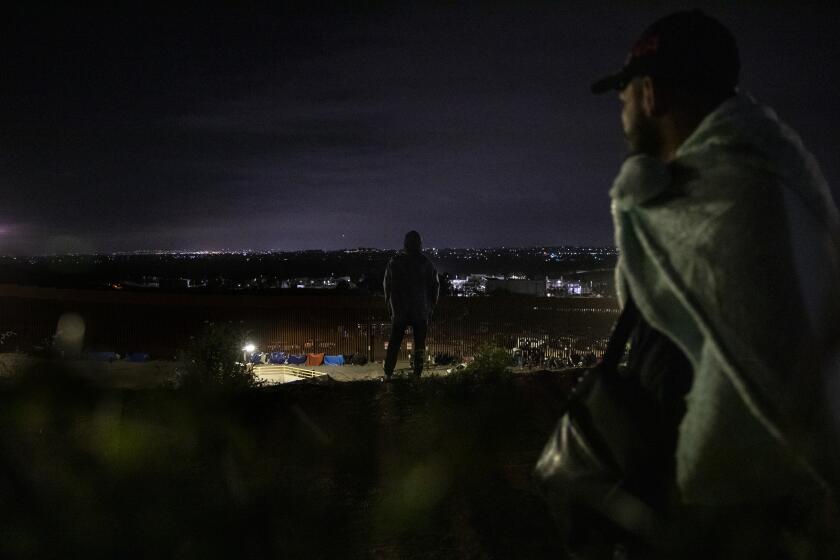Opinion: I’m the mayor of El Cajon, and I feel like our immigration concerns aren’t being heard.

El Cajon had one of only three drop-off points in San Diego County for asylum seekers who had received court dates.
Wells is mayor of El Cajon.
“The border is not open,” Secretary of Homeland Security Alejandro Mayorkas said the day before the end of Title 42 as an immigration control measure. But if the U.S.-Mexico border is not open and the authorities have “operational control,” defined by a 2006 law as “the prevention of all unlawful entries into the United States,” then why are we seeing a mass of humanity forming there?
Confusingly, two months before the end of Title 42, Border Patrol Chief Raul Ortiz (a guy whom you might think knows) contradicted Secretary Mayorkas and told Congress that there was no operational control.
The Biden administration’s decision to stop using Title 42 to control immigration has spurred a broader conversation about the border.
The truth is that whatever phraseology you use, there has been a 270 percent increase in Border Patrol encounters with migrants since 2019. Under the Trump administration, there were approximately 51,000 a month. Under the new administration, there are 189,000 per month. There were over 2 million border encounters just last year.
I tend to be a person who believes in actions more than promises and statements, and as John Adams said, “Facts are stubborn things.” The only conclusion that I could come to is that we were all being gaslit.
I am the mayor of the city of El Cajon, and my information about the border is no greater than that of most any other citizen in America. The federal government had not contacted me or my city in any way. The state of California was also silent.
With a few weeks to go before the anticipated wave of humanity was to arrive, I started to be concerned. I was fully aware that El Cajon had one of only three drop-off points in San Diego County for asylum seekers who had received court dates. We had no real numbers but concluded through rumor and law enforcement contacts that we should expect between 300-500 people a day. I wrote letters, including to President Joe Biden and Rep. Sara Jacobs, D-San Diego, asking for information, funds and coordination, but I got no response. Finally, like a unit trapped behind enemy lines, my council and staff realized that no help was coming. We were on our own.
Something then happened that surprised us all. The expiration of Title 42 came, yet there was no wave. We have seen no significant increase in the number of persons being dropped off in El Cajon.
Many are being successfully assisted by Catholic Charities and Jewish Family Service of San Diego, and for this I am grateful, but I am still concerned.
My job as mayor is fairly simple: Keep people safe, keep everything working, watch the money and fight for the best quality of life possible for the people. So I look at the current border policies and worry about how this will pertain to my simple formula for doing my job.
I recently asked a reporter if she would feel safe having all of the doors taken off of her house, with a sign in the yard that said “Come on in and make yourself at home.” She naturally recoiled at that idea. That’s how I feel about America, and because my town is just 28 miles from the border, I’m concerned about what the lack of doors and the welcome sign might bring.
Get Weekend Opinion on Sundays and Reader Opinion on Mondays
Editorials, commentary and more delivered Sunday morning, and Reader Reaction on Mondays.
You may occasionally receive promotional content from the San Diego Union-Tribune.





